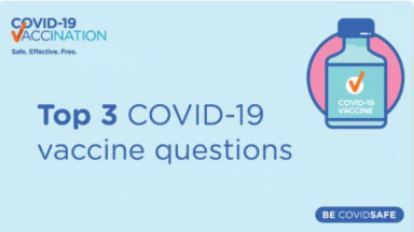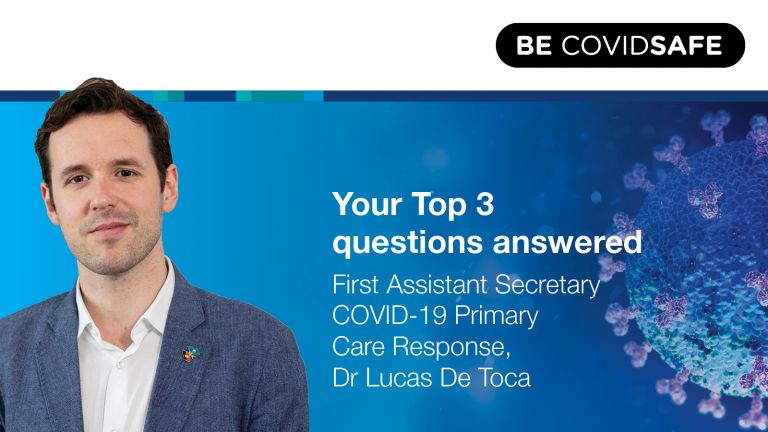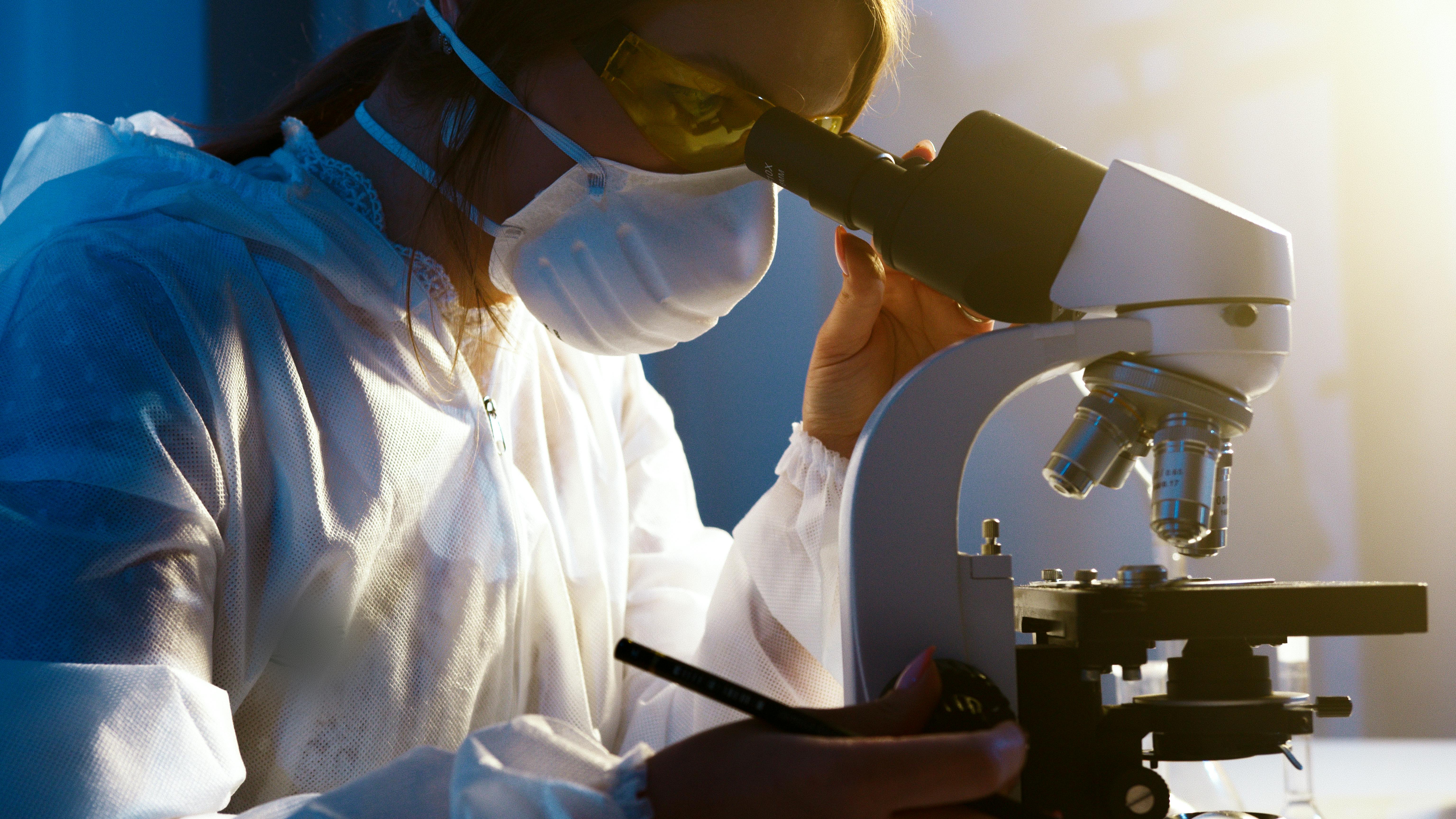
Good morning, my name is Dr Lucas De Toca and I lead the Department of Health’s primary care response to COVID-19. Today I am joined by Linda who will be doing Auslan interpreting as usual. Welcome back to Top Three. My shout out today goes to people who are starting to go back to their normal health care after they have put off some of their appointments or screening due to COVID-19. Last year was a big disruption and it meant that a lot of people could not access care face to face and had to push back regular screening or cancer screening. We really encourage you to go back to those appointments and catch up on your outstanding health care needs, now that face to face care is available throughout most of the health system.
As usual, we’re on the land of the Ngunnawal people. So, (Speaks in Indigenous language). I would also like to acknowledge the Elders from the lands where people are viewing from.
Last Top Three, I got my flu shot while Linda interpreted. I’m happy to confirm the only side-effect that I’ve experienced is a little bit of a sore arm. Nothing else. And it really did not hurt. So I’m plugging again, a reminder, if you are not yet eligible for the COVID-19 vaccine, go and get your flu vaccine. If you are eligible for the COVID-19 vaccine, try to make an appointment and get your COVID-19 vaccine and then two weeks after you can get your flu shot.
First question, if I’m eligible to get the vaccine, can I choose which type I get?
No. You won’t be able to choose which vaccine you can get. At the moment, COVID-19 vaccines are prioritised for different population groups based on the clinical advice and regulatory approval from the Therapeutic Goods Administration, the TGA, and appropriate cohorting or assigning a vaccine to different groups based on availability and need. The Australian Technical Advisory Group on Immunisation, ATAGI, provides advice to the Government on how to best structure the vaccine program and do this in a safe and effective way. We have two very effective vaccines in Australia available at the moment, Pfizer and Oxford AstraZeneca. They are both really good at preventing severe disease, hospitalisation, and death from COVID-19, but based on the safety profile and associated side effects, they have been prioritised to different groups and based on the advice of ATAGI, the Australian Technical Advisory Group on Immunisation, the Pfizer vaccine is the preferred recommended option for people under 50 years of age that is because there has been identification of a rare but severe side effect with the AstraZeneca vaccine, and this rare side effect which is called Thrombocytopenia syndrome or TTS, appears to be more common in younger people, also older people are at a much higher risk from COVID-19, and that is why the AstraZeneca vaccine is preferred for people over 50.
At the moment, if you are over 50, you can access AstraZeneca from May 17 from any private care facility, but at the moment from quite a number of clinics, if you are under 50 and eligible under phase 1 with an underlying condition or a significant disability or you are a healthcare worker or in a high-risk position or priority for critical emergency services, you can access Pfizer from one of the Pfizer clinics. Maybe later in the year, things may change and we might be able to offer different vaccines and there are a potential for other vaccines to come into Australia, but at the moment the moment is if you are under 50, Pfizer is preferred, over 50, AstraZeneca is preferred. When it’s your time to make an appointment and your doctor offers a vaccine to you, we encourage you to get the vaccine that is offered if you get the opportunity but, as it has always been, the vaccination program in Australia remains voluntary.
Second question – if I don’t have a smart phone, how do I check in to venues, pubs, clubs?
Yeah so, the check-in is a really important way to maintain the contact tracing now that Australia is essentially open, within our borders. If you don’t have a smart phone, cause most states now have a designated public app that you can use to check in using a QR code, but if you don’t have a smart phone or your phone does not connect to the internet you can either use a friend or family member or someone you are with to check in, you can check in others with the apps, or you can use pen and paper. It is a requirement for venues to be able to record and be able to record visitors that come in to public venues and they have to offer it to people, regardless of whether they have a smart phone or not. The quickest and easiest way is to use the QR code with a smart phone on the app, but if you do not have one and you are not with anyone who has one then you can still use pen and paper to record your details. It is really important we do so, because if there is, the unlikely but eventually across the country it does happen, the case of a confirmed case of COVID-19 in a venue, pulling the registrations from the QR code and pen and paper list allows contact tracing for the COVID detectives that the public health units use to identify and quickly see who has visited the venue to reach out to isolate and get tested if necessary and that has been so effective in the last few months so that when there has been one case in the community we can identify contacts and isolate and stamp out the cluster before it becomes an outbreak.
There was a case of community transmission in NSW yesterday and NSW is actively using the contact tracing capability from venue registration to support the public health response. It is a really simple thing that we can do when we enter a public venue and we strongly encourage you to keep doing it. It is a requirement for entry into public venues in this COVID normal environment we have now.
Finally, why do reactions to the COVID-19 vaccines differ?
Yeah so everyone can respond differently to different vaccines. All vaccines have potential side-effects. The most common ones are very common across all vaccines. You can be a bit sore around the injection site or you can have general symptoms of not feeling OK or fever or just feeling rundown and a bit of an ache. That is common across most vaccines and it shows that your body is responding. It is building up an immune response and that sometimes mimics how you feel when you are feel when you are rundown. The vaccines approved in Australia are safe and the TGA does the initial approval and registration of vaccine but also does an ongoing monitoring and surveillance system by which side effects, adverse events, anything related to vaccination gets identified, catalogued, dealt with. There are regular updates on the findings in terms of adverse events and side-effects to the vaccines. After you get your vaccine for the COVID-19 vaccine, similar to other vaccines, you may experience some mild side-effects. They are relatively common. It is an effective vaccine so they seem to be quite prone to cause these mild side-effects. You might get a bit of a fever or some aches and pains. If you experience a sore arm where the needle went in what those symptoms that is normal. You should contact your health professional if the side-effects persist after a few days or if they are severe or are concerned. You should go back to your regular GP or the health professional and convey what’s happening. A big part of our understanding of how vaccines work and ongoing safety monitoring mechanisms that the TGA relies on you reporting the side-effects you are experiencing to your health professional.
If you don’t get side-effects, it doesn’t mean that the vaccine is not effective. We are talking about how the side-effects are showing that your immune system is reacting but we don’t want you to think that if you don’t get the side-effects that your immune system doesn’t. Except for a sore arm, I’m not feeling anything after my flu shot from a few days ago but that does not mean it is not working, it just means that how the body reacts and the immune system varies from person to person. As always, a vaccination is just another tool in the toolkit of behaviours we can have to support the public health response and remaining COVID-safe behaviours remains as important now as it was one year ago.
That is all for today. Thank you for watching and thank you Linda for interpreting and thank you for staying COVID-say. See you soon.
Top 3 questions
Dr Lucas De Toca, COVID-19 Primary Care Response First Assistant Secretary, answers the Top Three questions you’ve been asking on our social accounts:
- If I am eligible to get my COVID-19 vaccine, can I choose which type I get?
- If I don’t have a smartphone, how do I check-in to venues, pubs and clubs?
- Why do the reactions to the COVID-19 vaccines differ?







